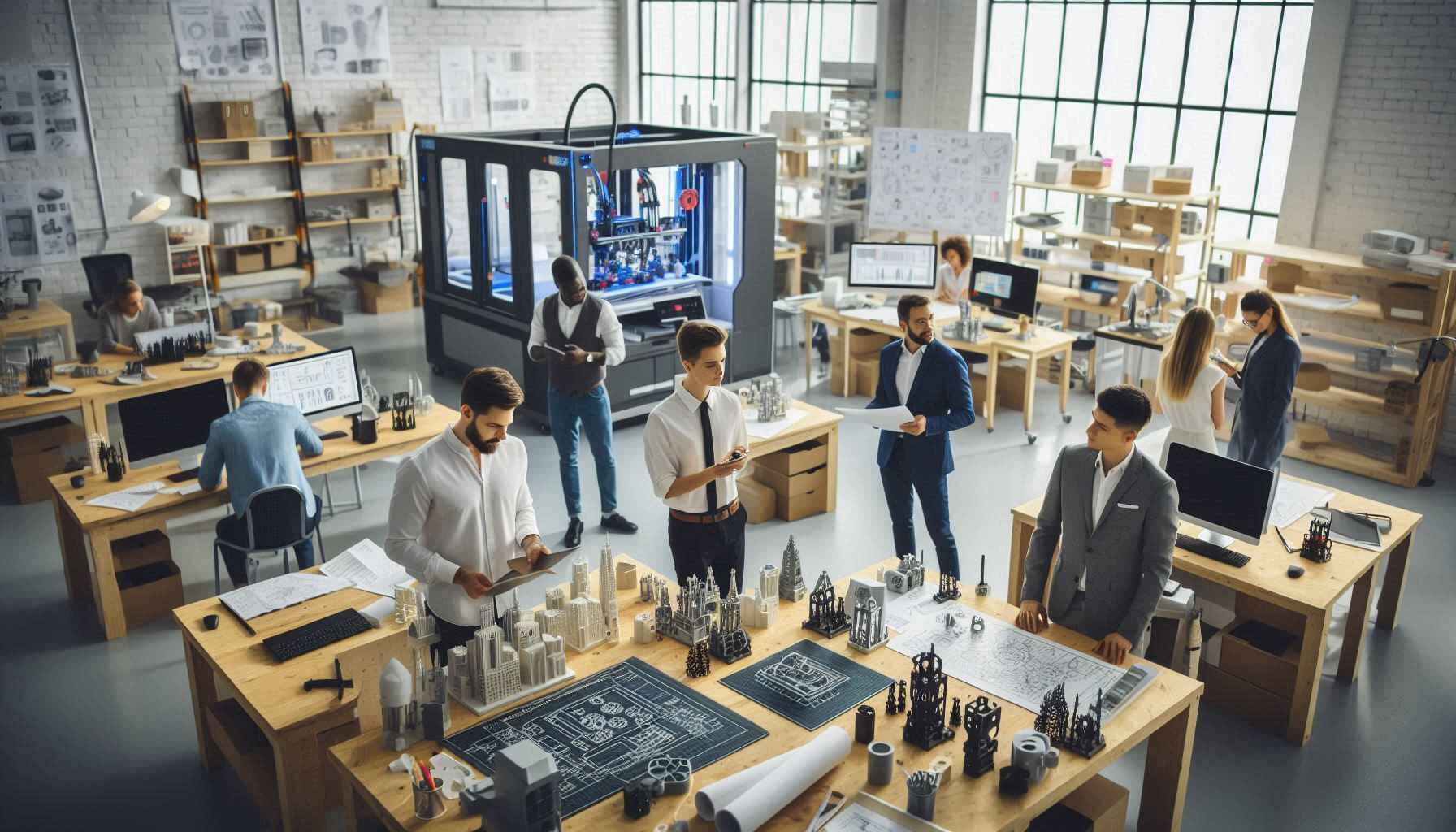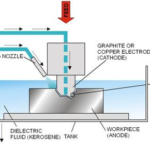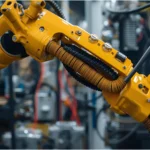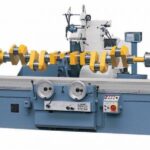
Speed and agility are the keys to success in today’s manufacturing. Rapid prototyping has become the secret weapon of leading companies. The ability to move swiftly from concept to functional prototype is more valuable than ever.
The year 2025 marks a turning point in many prototyping techs. There are various breakthroughs available, including materials science, digital manufacturing, and automation. Innovators now have unprecedented tools to transform ideas into reality faster. Also, with more affordability and fewer risks.
This article explores how modern Rapid Prototyping Services empower businesses across industries. Also, why partnering with a trusted Rapid Prototyping Company can mean the difference between stagnation and market leadership.
What Is Rapid Prototyping?

Rapid prototyping is the process of quickly producing physical models or parts directly from digital designs. Traditional fabrication methods can take weeks or months to prepare tooling. However, the rapid prototyping approach can compress the development timelines significantly.
This method uses various techniques. 3D printing, CNC machining, vacuum casting, and other agile technologies. You can create testable prototypes in a matter of days. Not months. This speed unlocks a host of competitive advantages:
- Faster Iteration. Evaluate designs quickly. Then, refine them.
- Cost Efficiency. Identify flaws early, reducing waste and tooling expenses.
- Market Agility. Bring new products to market faster.
- Customer Validation. Validate your prototype before moving to larger production.
Product lifecycles keep shrinking. These benefits are no longer optional. They are essential.
Cutting-Edge Techs
This year, rapid prototyping is powered by several technological leaps. Here are some essential aspects:
- 3D Printing. New machines print complex parts with multiple materials and colors in one build cycle.
- High-Speed CNC Machining. Advanced 5-axis CNC equipment produces production-grade prototypes. These prototypes feature tight tolerances produced in record time.
- Vacuum Casting for Short Runs. Flexible silicone molds enable up to hundreds of units, perfect for bridge production or beta testing.
- Digital Twin Integration. Design software now links directly to manufacturing equipment. It can help reduce errors. Also, you can automate quality checks with it.
- Sustainable Materials. Biodegradable and recycled resins are increasingly popular. It is perfect for environmentally conscious brands.
You can apply these innovations for an automotive component, a consumer gadget, or a medical device. Also, you have more options than ever to achieve precision, speed, and sustainability.
Also Read:
- Manual vs. Automated 5-Axis Machining: Which One is Right for You?
- What is Computer Aided Manufacturing – CAM?
- AutoCAD vs SolidWorks: Which is Better for Mechanical Design?
Prototyping for Every Industry
The value of rapid prototyping extends across various sectors. Here are just a few examples:
- Automotive. Engineers can use this technique to test aerodynamic components. They can also validate fitment and simulate crash performance.
- Medical Devices. Manufacturers build and evaluate surgical instruments or diagnostic equipment before regulatory submissions.
- Consumer Electronics. Brands develop functional casings, connectors, and assemblies to confirm usability and aesthetics.
- Industrial Equipment. Companies prototype complex mechanical systems, reducing development cycles by months.
- Aerospace. Lightweight structures and tooling are produced quickly. You can use it for validation in demanding environments.
In each case, time saved in prototyping translates directly to faster launches. It can also give you a stronger competitive positioning.
Trusted Rapid Prototyping Partner – What to Expect?

Tools and machines are essential. However, the expertise of your prototyping partner matters even more. The right Rapid Prototyping Company combines:
- Technical Knowledge: Skilled engineers who optimize designs for manufacturability.
- Material Expertise: Helps to select the best resins, metals, or composites.
- Quality Assurance: Thorough checking at every stage of production.
- Responsive Communication: Transparent updates to keep your project moving.
Technology and human insight combined to ensure that each prototype meets your standards. No matter how complex.
Global Logistics: Prototyping Without Borders
In 2025, the world has become a single marketplace. Leading prototyping companies support clients worldwide with:
- Multilingual Teams: To bridge cultural and technical communication gaps.
- Rapid Shipping: Air freight options that deliver prototypes in days.
- Digital Collaboration Platforms: Secure portals for sharing CAD files. You can also track progress and approve milestones.
This global capability means you can develop your product with the best partners. No matter where they’re located.
Rapid Prototyping Partnership Selection
Trying to find the perfect prototyping partner? It can define your product development success. Here are proven strategies to follow:
- Assess Their Technology Portfolio. Look for a diverse mix of capabilities. Check for their 3D printing and CNC machining services. Vacuum casting and injection molding are worth noting. More manufacturing services mean more ways to reach your goals.
- Review Case Studies and References. Strong companies showcase past projects. Seek proof they’ve delivered quality results in your industry or similar applications.
- Evaluate Communication and Support. Rapid prototyping means producing fast iterations. Also, clear updates are essential. Choose a team that provides transparent timelines. The team should also provide proactive status reports and easy access to technical support.
- Inspect Quality Management Systems. Ask about ISO certifications or internal quality processes. Consistent output depends on robust systems and repeatable standards.
- Consider Logistics and Scalability. Anticipate transitioning from prototype to low-volume production? Ensure your partner can scale operations seamlessly.
- Request Sample Parts. Nothing beats hands-on evaluation. Test their prototype samples. It is useful to assess various aspects. It helps you get the surface finish, dimensional accuracy, and material performance properly.
Combine these criteria. You can reduce delays, miscommunication, and unwanted revisions.
Linking Prototyping with Mass Production

An advantage of working with an experienced Rapid Prototyping Company is their ability to integrate prototyping into full-scale manufacturing.
Here’s how the process flows:
- Design for Manufacturability (DFM) Review. Your partner refines CAD models for tooling and volume production.
- Material Consistency. They use production-grade materials for prototypes, ensuring predictable results when scaling up.
- Bridge Tooling. Before committing to steel molds, you can run pilot batches with soft tooling (like aluminum molds) to validate processes.
- Process Validation. Early samples undergo rigorous inspections. It includes dimensional checks, stress tests, functional trials.
- Full Production Ramp-Up. After the validation, your design moves to mass production. It will often be processed within the same facility.
This integrated approach can eliminate friction and shortens timelines. Also, it can safeguard your investment.
Beyond 2025 – Future Trends Outlook
Today marks a profitable era for prototype manufacturing. The next wave of manufacturing innovations will be more fascinating. Here are some essential points:
- AI-Driven Design Optimization. Generative design algorithms will automatically create thousands of iterations. It will also help to optimizing strength, weight, and material usage.
- On-Demand Manufacturing Networks. Cloud-based platforms will connect designers to a global network of production hubs. It will enable localized manufacturing with minimal lead times.
- Smart Materials and Embedded Sensors. Prototypes will increasingly integrate IoT sensors and smart materials. It can allow real-time performance monitoring.
- Fully Sustainable Supply Chains. Closed-loop material recovery. It can build sustainability in manufacturing. Manufacturing production with green energy will become mainstream.
- Mass Customization at Scale. It is thanks to the advancements in digital fabrication. It will allow for cost-effective production. You can produce customized components in large volumes with lower costs.
You can embrace these new manufacturing trends. It will position your business ahead of competitors as the landscape evolves.
Conclusion
In 2025, the manufacturing tools are getting better developed. It can bring ideas to life with better accessibility. Rapid prototyping can guide you to innovate without limits.
Embrace the possibilities:
- Faster iteration
- Lower costs
- Better products
- Greener processes
- Happier customers
When you partner with an expert Rapid Prototyping Company, you’re not just creating parts. You are shaping the future. From concept to reality, this is your year to lead.








